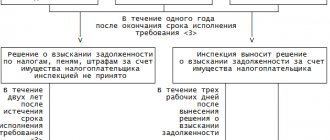“Accrual” and “calculation” of tax are different things. Individuals will not notice this difference, but for organizations this difference in terms is of great importance. Calculate tax - this means calculating the amount of tax based on the rate and tax base. To calculate tax means to reflect the calculated amount in the management accounting of the organization.
To calculate tax, you need to know the answers to the following questions:
- what tax must be paid;
- how to calculate the tax base;
- what is the tax rate?
Often organizations need to reduce their tax burden, then they resort to legal methods of reducing the tax base. For example, for organizations with OSNO, you need to increase your expenses in order to pay less tax. For other tax regimes, there are other legal ways of tax optimization. Often this serious issue requires the involvement of a specialist. And in the article we will talk about the main types of tax for individuals and legal entities.
Basic taxes for individuals
Individuals are the population of our country, ordinary citizens. Every resident of Russia is required to pay the necessary taxes. To understand taxation, you need to spend a lot of time on the Tax Code of the Russian Federation. However, we have summarized the most important information for you.
The general formula for calculation is as follows:
Tax = Tax base * Tax rate (%)
The tax base depends on the type of tax. Citizens of the Russian Federation are required to pay the following types of taxes:
- Income tax, or personal income tax (NDFL) . This is a federal tax, that is, the funds go directly to the budget of the Russian Federation. The tax rate is 13%. This tax is charged on any income of individuals received during the calendar year. It can be accrued both in cash and in kind. You can reduce the tax base using social and property deductions. For employees, income tax is paid by the organization as a tax agent. Therefore, for most citizens, tax payment occurs without their participation.
- Property taxes . This group consists of three taxes: property, land and transport. Funds from taxes go to the local budget, and their calculation is carried out by the local tax authority. Currently, there is a single payment deadline for property taxes – December 1st.
Property tax. The payers are the owners of real estate. The taxable base is the inventory value of the property. The tax rate is set by local government regulatory bodies depending on the total cost of objects and can range from 0.1% to 2%.
Land tax. The payers are the owners of land plots. The tax base is the cadastral value of the land. The land tax rate can be 0.01%, or 1.5%, depending on the type of plot.
Transport tax. Payers are individuals who own a vehicle. Money is paid to the budget from the moment the car is registered. Most often, the tax base is the vehicle's power, measured in horsepower. Local governments set the rate of this tax individually for their region.
- Excise tax . According to Article 181 of the Tax Code of the Russian Federation, this indirect tax is paid by individuals in the case of transporting excisable goods across the border.
- Water . This tax applies to those individuals who have a license to drill an artesian well and use it for its intended purpose.
- Hunting and fishing fees . According to Article 333 of the Tax Code of the Russian Federation, tax must be paid on all production. Accrual is carried out from the date of receipt of the hunting and fishing permit.
- State duties . Chapter 23.5 of the Tax Code says that duty is non-tax income. However, when individuals need to carry out some transactions through authorized bodies, a fee is paid. For example, issuing a foreign passport or filing a claim in court is subject to a state fee.
Taxes must be paid within a certain period of time. If a citizen misses the payment deadline, the debt becomes overdue and penalties begin to accrue. All responsibility for non-payment of taxes lies with the taxpayer.
It often happens that notifications about accrued taxes do not arrive. Therefore, periodically individuals need to independently check their tax accruals. This can be done in two ways:
- visit the tax office and check with the inspectors whether there are taxes to be paid;
- Log in to the taxpayer’s personal account on the website of the Federal Tax Service (FTS). To get a login and password for your personal account, you need to visit the tax office or have already confirmed registration on the State Services website.
There are many ways to pay taxes: online banking, electronic money, payment terminal, bank cash desk, taxpayer’s personal account. You choose the most convenient one for you.
Reporting periods
As practice shows, most private owners prefer the simplified tax system. Perhaps one of the reasons is that, according to the “simplified” approach, an entrepreneur does not have an urgent need to fill out mountains of paperwork and reports, but must submit only four declarations during one tax period - a year. Payment of taxes by individual entrepreneurs for the previous year must be completed by filing a declaration with the tax service before April 30 of the following year. However, according to the law, payment of all taxes of individual entrepreneurs to the simplified tax system must be carried out no later than the 25th day of the first month beginning the new quarter. There are 4 payments in total:
- for the first quarter (the first three months after the start of work);
- for six months (second quarter);
- for 9 months (third quarter);
- for the year (fourth).
When the time comes for deductions, the individual entrepreneur has the right to choose the method of transferring the money (this means how taxes are completed, and not where to pay). The simplest method is the usual submission of a receipt through Sberbank. If you work with banks, you can send a special payment order through your current account.
When payment deadlines may change
The legislation provides for a number of cases when tax payment can be carried out beyond the specified deadlines. So, if an individual entrepreneur ceases business activities, he is obliged to pay all tax arrears by the 25th day of the month following the one in which the individual entrepreneur was removed from the register of entrepreneurs.
Also, special deadlines are established for individual entrepreneurs who worked for the simplified tax system and violated the rules of its application. In this case, payment must be submitted by the 25th of the month following the quarter in which the individual entrepreneur lost the opportunity to use the simplified tax system.
It must be remembered that the rules are necessary in order to comply with them, since otherwise the entrepreneur will face serious sanctions from government agencies. Thus, each unpaid advance payment promises a daily penalty in the amount of 1/300 of the refinancing rate of the Bank of the Russian Federation. As a result, a very large amount may accumulate, so it is recommended that individual entrepreneurs remember the dates.
Basic taxes of legal entities
The taxes that organizations must pay directly depend on the taxation regime. Depending on the conditions for calculating income and expenses, there is a difference in tax rates and types of taxes. However, there are a number of payments that are made by any organization, regardless of the mode:
- Personal income tax . The organization, as a tax agent, makes payments for the employee in the amount of 13% of his income. If the employee is not a resident of the Russian Federation, then the rate is 30%. These standards are established in Article 224 of the Tax Code of the Russian Federation.
- Insurance premiums . Contributions for contributions to compulsory pension insurance (MPI) amount to 22%, to compulsory medical insurance (CHI) - 5.1%, to compulsory social insurance in case of temporary disability and in connection with maternity (FSS) - 2.9%.
- Property taxes (property, land, transport). The property tax rate for legal entities is 2.2%, the land tax rate (from 0.1 to 1.5%) is determined by regional authorities and depends on the type of land, the transport tax rate depends on the power of the vehicle.
- State duty . If an organization makes changes to its constituent documents, for example, changes the legal or actual address or composition of owners, then a state fee must be paid for applying to government agencies.
- Other taxes , such as water tax or environmental impact fees.
Thus, the organization pays taxes on the property it owns. If the property owns real estate, transport or land, the company is obliged to make contributions on property taxes. The company also transfers personal income tax and insurance premiums for its employees.
Personal income tax is withheld from an employee's salary, but insurance premiums cannot be withheld. They are paid entirely at the expense of the organization. Other tax payments depend on the company's tax regime.
Methods of paying taxes
The procedure for transferring tax payments to the budget depends on the category of taxpayer. Individuals can pay taxes:
- at the bank (payment by cash or card, as well as by barcode through a terminal) - for this you need a tax receipt received from the tax authority;
- through the taxpayer’s personal account;
- using the Sberbank-Online Internet system (via the “Payments and Transfers” tab);
- in other ways (via a mobile phone - individual banks provide this service, regional government service portals, etc.).
Since November 30, 2016, the Tax Code of the Russian Federation allows for the possibility of paying tax for third parties. Read more about this in the material “Payment of taxes for third parties is allowed .
Read more about how to fill out a payment order online and what services are available for this in this publication .
Unlike an individual, a company must pay taxes only by bank transfer - this is indicated by the clarification of the Ministry of Finance .
To pay taxes and insurance premiums, a payment order is drawn up - an order to the bank to transfer a certain amount to the budget. To correctly transfer funds to the budget, you need to indicate the BCC, payer status, type of payment, OKTMO and other details. If you fill out the payment order incorrectly, the tax authorities will not receive the money or will not be able to identify it. And the taxpayer will be considered a debtor.
To prevent this from happening, read this instructional article.
Find out how to issue a payment order to pay insurance premiums from the publication.
You can generate a payment invoice not only in an accounting program, but also on the Federal Tax Service website - in this case, some of the details will be immediately entered in accordance with the type of tax paid, and you will only need to indicate the amount, purpose of payment and tax period.
Read more about how to fill out a payment order on the tax office website here .
Taxes under different tax regimes
According to Chapter 6 of the Tax Code of the Russian Federation, there are a total of 5 taxation regimes:
- OSNO - general taxation regime;
- STS - simplified taxation system;
- UTII - single tax on imputed income;
- Unified agricultural tax - unified agricultural tax;
- Patent is a patent taxation system (available only to individual entrepreneurs).
For the general taxation system, in addition to general taxes, the following payments are due: VAT in the amount of 0%, 10%, 20%; income tax of 20%.
Under the simplified taxation system, VAT, income tax and personal income tax (for individual entrepreneurs) are not charged. Instead, according to the simplified tax system there is an income tax. According to this system, there are two options for determining the object of taxation:
- simplified tax system (income). A tax of no more than 6% is charged on the organization’s income. The exact rate depends on the region.
- STS (income - expenses). A tax of 5% to 15% is charged on income reduced by the amount of expenses.
The single tax on imputed income and agricultural tax, like the simplified tax system, exempts a company from paying many taxes. The tax base here is not profit, but the amount of income. The tax rate is determined by regional authorities.
Thus, organizations operating under the general tax regime pay the most taxes. To switch to another regime, it is necessary to comply with a number of criteria regarding the number of personnel, the cost of fixed assets, and the presence of branches and divisions.
Payroll posting dates
The payroll entry for a particular month is dated to the last day of that month.
The date of postings for accrual of advance payment depends on what method of calculation is accepted in the organization. There are two options:
- The advance is equal to wages for the time actually worked in the first half of the month. In this case, as a rule, reserve deductions are made equal to the amount of personal income tax, alimony, etc. The advance accrual posting is created at the end of the first half of the month for which it was accrued (for example, February 14 or September 15). Then they make postings on reserve deductions.
- The advance is equal to a fixed amount, which is calculated as a percentage of the employee’s monthly salary (for example, 40%). With this option, there is no need to create a separate entry for accruing the advance payment. Only the salary accrual entry is made for the entire month, dated the last day of this month (for more details, see: “Salaries for the first half of the month: how to calculate the advance and what amounts to withhold from it”).
Calculate your advance and salary for free, taking into account all current indicators
Postings for accrual and withholding of personal income tax, for writing off reserve withholdings, for calculating insurance premiums and withholding alimony are usually made on the last day of the month for which wages are accrued. And postings for the payment of advance payments and wages, for the transfer of personal income tax and contributions - on the day when the money is debited from the account or issued from the cash register.
Briefly about the main thing
Taxes are a major source of income for our country. Both individuals and organizations are required to make tax payments. The tax burden of individuals depends mainly on the property they own.
If the property owns land, real estate or transport, then the citizen is obliged to pay property taxes by December 1 of each year. Property taxes are assessed by local authorities, but not all taxpayers receive notification of the assessment. Therefore, you need to track your debts to the state yourself.
For legal entities the situation is slightly different. The list of taxes that are subject to accrual and payment depends on the tax system under which the company operates. Most taxes are paid under the general taxation regime, but each regime has its own subtleties and features that only a specialist in this profile can take into account.
Sources:
Tax Code of the Russian Federation. Section X. Local taxes and fees.
Tax Code of the Russian Federation. Section VIII. Federal taxes.
Establishment and operation of unitary enterprises
A unitary enterprise is registered by decision of a government agency or local authority that has the appropriate right to do so. The founding document is the charter. The size of the authorized capital of an organization, which is based on the right of economic activity, must comply with the requirements of current legislation.
Before state registration of a company, it is necessary to fully pay the authorized capital of the enterprise.
If, at the end of the financial year, the price of the organization’s net assets, which is based on the right of management, is less than the size of the authorized capital, the authorized body is obliged to reduce the authorized capital in the manner prescribed by law. In cases where the value of net assets is less than the amount established by law, by court decision the enterprise may cease its activities.
Taxes paid by unitary and other enterprises
So, let’s figure out what taxes the company pays. Corporate tax is one of the main revenues of the federal budget. Chapter 13 of the Tax Code establishes that income tax acts as a federal tax.
Payers of income tax are:
- Russian companies;
- foreign legal entities that operate in the Russian Federation through permanent representative offices and receive income in the Russian Federation.
- for Russian legal entities – calculated as the difference between income and costs;
- for foreign companies that operate in the Russian Federation through permanent representative offices - the difference between the income received in the Russian Federation and the expenses incurred in Russia;
- other foreign legal entities - income from sources in the Russian Federation.
Profit is considered:
This is established by Article 309 of the Tax Code.
What is the income tax rate?
The company pays income tax at a rate of 24%. This money goes to:
Subjects of the Russian Federation have the right to reduce the tax rate for certain categories of citizens in the area of those amounts that are sent to their budgets. The minimum rate is 10.5%.
Land tax
Land taxes must be paid by enterprises, and revenues are sent to local budgets. The use of land in the Russian Federation is paid. In this case, land tax, rent and the standard cost of land must be paid. Land owners and users are required to pay land tax every year.
For the acquisition of plots in cases provided for by the Land Code of the Russian Federation and for obtaining a bank loan secured by land, the standard cost of land applies.
The introduction of land payments is intended to create incentives for rational land development, equalization of socio-economic conditions for farming, increasing soil fertility, creating special funds for financing activities and infrastructure development.
The amount of land tax is influenced by the results of the economic activities of land owners.










